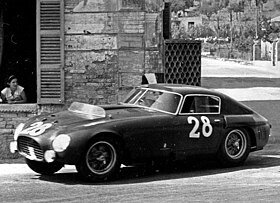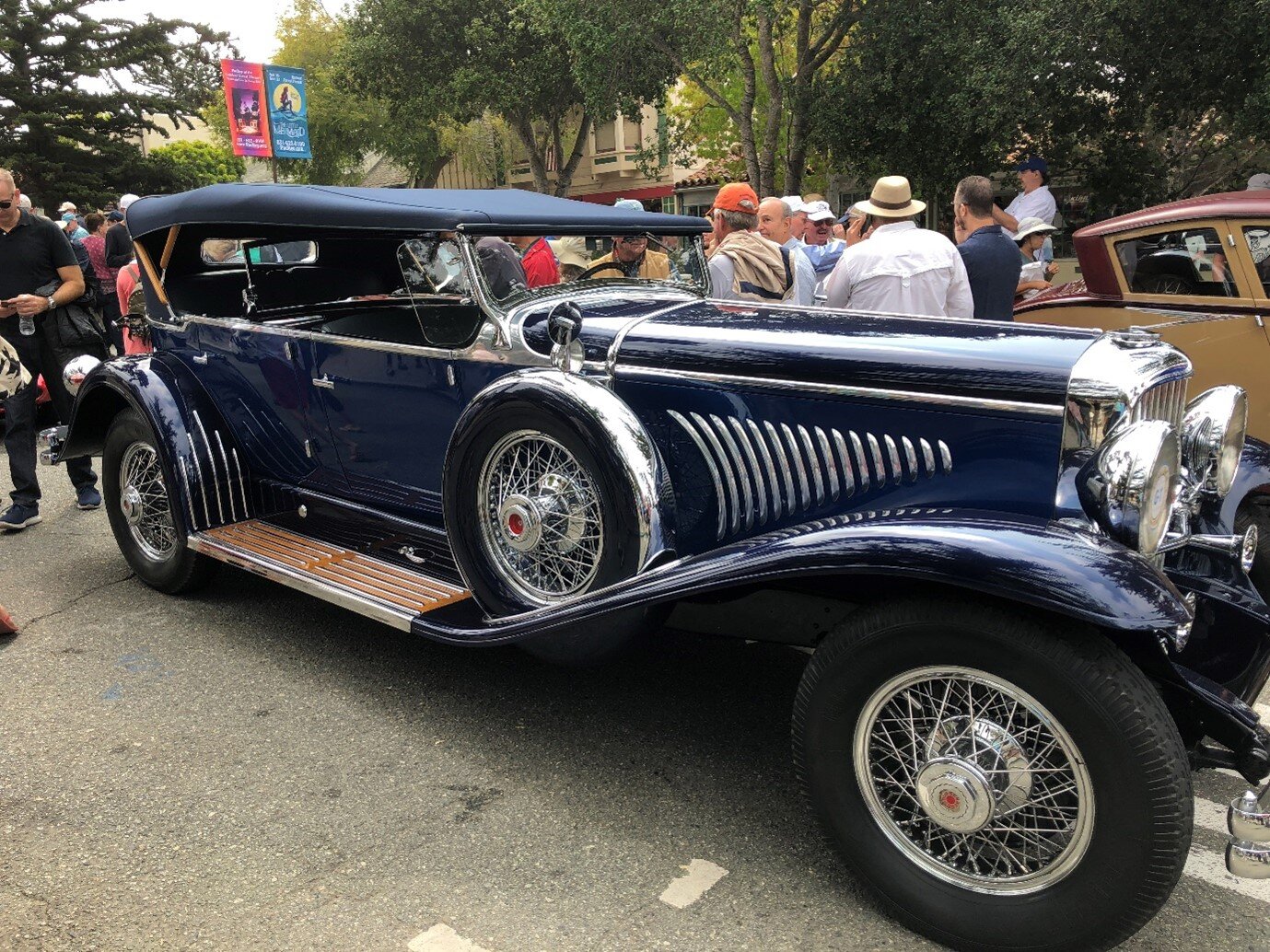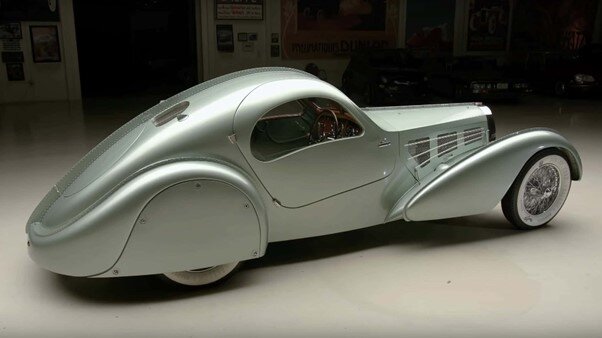Ferrari 375 MM Chassis Number 0378AM
Emerging in early 1953, the 375 MM was phenomenally successful in Europe as well as in America. Ferrari built just 26 of their 4.5-liter, 340hp monsters in 1953 and '54, mostly for competition use. Today, 25 of those 26 are alive and well and accounted for. Ferrari sold the missing one, with the chassis number 0378AM to Dr Dottore Enrico Wax, an Italian businessman and Italy’s importer of Enzo Ferrari's favourite booze (Johnnie Walker). Dr Wax was a supercar collector who never raced his 375 MM, keeping it in his garage in Genoa. The car vanished off the face of the earth never to be seen or heard of to this day. However, the Ferrari community are also fairly sure that someone, somewhere knows where it is; but it's also Possible that is still sitting in a garage in Genoa.
Bugatti Aerolithe
Bugatti was one of the most important sports and racing car brands in the 1930s. It was a position Bugatti deserved due to numerous victories and extremely advanced road cars. However, since Bugatti was a small company that relied on outsourcing bodies for their cars, they are hard to keep track of where or what happened to the vehicles today. Most of Bugatti’s car histories are missing the documentation of their history. It is estimated that Bugatti built and sold around 10,000 cars until 1947.However, there is one Bugatti that is possibly the most extreme classic car missing for 80 years. Unfortunately, there is not any trace of its fate or whereabouts. This car is the legendary Bugatti Aerolithe.
Bugatti had just begun construction of its new Type 57, designed and engineered by founder Ettore Bugatti’s son Jean. The French marquee went on to build about 800 Type 57s between 1934 and 1940, but never one to be satisfied with his work, Jean went about envisioning something more, something that would take his father’s famous line of “Nothing is too beautiful, nothing is too expensive” truly to heart. In 1935, Jean put pen to paper. The result was the Aerolithe concept, a show car whose curves would spawn four coach built Type 57 SCs—renamed the Atlantic Coupes.
Bugatti introduced it in 1935, building the Aerolithe on a T37 chassis with a design like the gorgeous Bugatti Atlantic. However, it came with a body they made from an extremely advanced aluminium-magnesium alloy called Electron. Since it was not possible to weld Elektron–magnesium, the panels were riveted together with standing seams that became a Type 57 Bugatti trademark detail.
Because of its unspeakably gorgeous construction, it was shown in London and Paris two or three times in 1935, road tested in '36 and then vanished. There is no particular reason to think it survived the War as the factory at Molsheim was seized in 1940; but prominent employees including Pierre Veyron were active in the resistance and the area was not heavily bombed in World War II.
Three of these cars have been accounted for and are currently held in very prominent collector hands. Two have Won “Best In Show” at the Pebble Beach Concours d’Elegance. The last of the Atlantic Coupes, however, vanished without a trace. And if it still exists, it could be the most valuable car ever.
Duesenberg SJ-506
Duesenbergs are one of the finest American cars the industry ever built. It is also one of the most respected, sought-after classic cars in the world. The Duesenberg SJ-506 is not just a lost Duesenberg; it was and still is among the most beautiful cars of all time. One of 36 320hp factory supercharged Duesenbergs (SJs), it was bodied by Carrosserie Franay in Paris as a town car cabriolet speedster–a two-door convertible coupe with a rear luggage compartment faired in. After appearing at the 1934 Paris Salon, it was sold to Emile Beghain, who the following year would co-drive a Duesenberg at Le Mans. He brought it to his home in Algeria, where it remained until he fled the country during the war in 1962. While reports from Algeria were that it was destroyed and buried, no trace of it were ever seen again.
The SJ model is the top of the line “Doozy” with a supercharged eight-cylinder engine and an astonishing 320 HP. This was unheard of in the 1930s. Duesenberg only made 26 of them. While they have accounted for most of the cars, the chassis number 506 has been missing since the early ’60s.
The car was bodied by the French company Franay, appearing at the Paris Motor Show in 1934. They sold it to Emile Beghain of Algeria, who raced it on the Le Mans track, later returning with the car to Algeria. The elegant roadster remained in his possession until 1962 when civil war broke out ,Beghain was forced to flee. Although some people think the car was destroyed, there is no evidence of that, so the destiny of the SJ-506 remains a mystery.
1969 Ford Mustang Boss 429 Rear Engine
The Boss 429 Rear Engine is one of the most interesting Mustang prototypes. Basically, they took the 1969 Boss 429 and moved the engine to the rear. Then Ford extensively tested it to see if this conversion had significant advantages over the standard layout.
They placed the engine longitudinally in the boot and connected it to the rear wheels over the C6 automatic transmission unit. Next, they turned the rear windscreen into a hatchback door to provide access to the engine. In fact, the entire conversion was surprisingly trouble-free. The Boss 429 Rear Engine had a 40/60 weight balance. The added weight over the rear axle helped launch it off the line and reduced wheel spin. However, Ford realized there were not any significant performance improvements to the standard front mounted engine model and decided to can the project before it got started with only one prototype being built.
Known internally as the LID Mustang, this unique project was the work of Ford Motor Company's Special Vehicles section and Kar Kraft, its private Detroit-area engineering facility. (Kar Kraft was ostensibly an independent contractor but had only a single client: Ford.) The LID acronym was short for Low Investment Drivetrain—an experiment to produce a mid-engine Mustang on a budget. Instead of an exotic European-style transaxle like, say, the Ford GT, this project used as many Ford production components as possible.
Although this was a radical experiment done on the fly and with an extremely low budget, it was a forward-thinking idea that would later be accomplished by other brands with great success. Unfortunately, the project was scrapped, and this innovative prototype was destroyed and never put into production.
But this is where the corundum gets started. The LID Mustang was not destroyed. In fact, the purist doubt that happened at all.
After its test program was completed, the car was sent to a fenced-in bullpen at the Dearborn Proving Grounds, and there it sat with some other discarded test vehicles. From there the Mustang was supposed to be sent to the shredder but instead, sources in the know simply say the car just vanished one day. So, rumour has it that this one-of-a-kind Mustang has simply been sitting in a private garage somewhere in Dearborn or Allen Park for the past 40-odd years, and one day it will reappear. We will be looking forward to that day.
Renault Type CB Coupe De Ville
On April 15, 1912, the RMS Titanic sank on its maiden voyage after striking an iceberg in the North Atlantic. History remembers the 1,503 people who died in the tragedy. But a story you may have never heard is the one surrounding the fate of the only car on board. The Titanic’s cargo manifest—having survived aboard the Cunard liner Mauritania—listed one automobile “case” onboard the fated ship. The car in question: a 25-hp 1912 Renault Type CB Coupe de Ville owned by Titanic first-class passenger William Carter of Bryn Mawr, PA. The Renault itself was stored in the port side Orlop Deck storage area. The Carter family survived, but the car a total loss, having sunk to the bottom of the Atlantic along with rest of the ship’s cargo.
Carter later filed a claim against White Star Line for the value of the Renault ($5,000) with Lloyd’s of London.
It is through this claim that the identity of the vehicle was provided. No known photographs of Carter’s car exist. He died in 1940. In the years since the ship’s discovery at the bottom of the north Atlantic, several expeditions have attempted to locate the car. Though no conclusive findings have been made, one research team captured a photograph of what appeared to be the car’s left front wheel and fender. After more than 100 years on the ocean floor, however, it’s not likely much would remain of the car today.






















